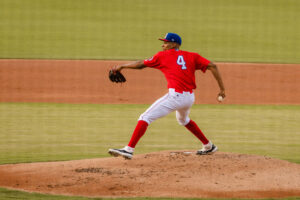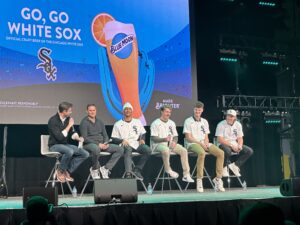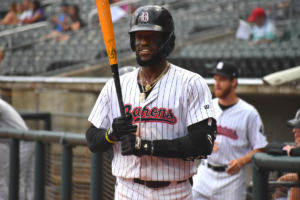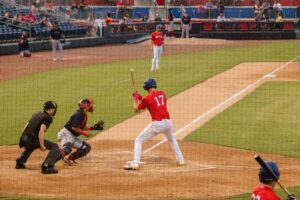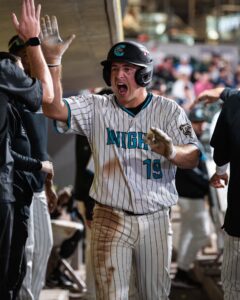Top White Sox Prospects by Position 2020: Left-handed Relief Pitchers
Welcome to another entry in the off-season article series here at FutureSox. In the article below, we list our organizational top five left-handed reliever prospects.
1. KODI MEDEIROS. PREVIOUSLY UNRANKED. LAST LEVEL: AA BIRMINGHAM
With a limited number of nominated left-handed relievers available to choose from, 23-year old Kodi Medeiros was our consensus number one, occupying the top spot on every single contributor’s list. Then, a few weeks after we all handed in our top five’s, came the completion of the Edwin Encarnacion signing. Medeiros was designated for assignment to free up a spot on the 40-man roster.
Wait.. FutureSox’ top left-handed reliever was unceremoniously DFA’d? Were we thát wrong about him?
Time will have to tell, but there is an argument to be made that the Hawaiian, who came over from the Brewers in 2018 for Joakim Soria, earned the top spot on the list regardless. Yes, he had his downsides in 2019. Though young for the level — Medeiros was on average about a year and a half younger than the competition — his career-long control problems persisted. Despite opening the season as a starter, the organization moved him to the bullpen after a June 1st start against Montgomery, in which the lefty gave up 6 earned runs in 3.2 innings.
REINVENTION
At that point, Medeiros’ season ERA stood at an unsightly 7.75 after 9 starts. He gave up 3, 5 or 6 earned runs in all but one of his starts, and did not pitch deep into games. The 26 walks in the 40.2 innings pitched did not help at all, so the club had seen enough. Medeiros was moved to the pen and the re-invention started.
In the 19 relief outings that followed, Medeiros improved tremendously, giving up only 12 earned runs in 42.1 innings (2.57 ERA). Control still eluded him at times, as he posted a 5.3 BB/9, but he also limited the amount of hits he gave up. Also, he was able to use his arsenal better in the shorter energy bursts out of the pen. Between the mid-90s fastball, sweeping slider, and decent change-up, Medeiros finally was able to fully use his stuff. As a reliever, there sure was value to be had in the arm of the young left-hander.
Perhaps the White Sox felt like the two-month turnaround was a mirage, because Medeiros was designated for assignment to make room on the 40 man roster for Edwin Encarnacion. The left-hander did clear waivers and was assigned to Triple-A Charlotte, giving him another chance in the White Sox organization. Medeiros was invited to Spring Training.
2. CALEB FRARE. PREVIOUSLY UNRANKED. LAST LEVEL: AAA CHARLOTTE
Frare opened some eyes in 2018, after being acquired from the Yankees organization in exchange for international bonus pool money. The then-25-year old lefty was placed in AAA, and pitched only one inning at the level before joining the White Sox organization. He was lights out: 19 strikeouts in 12 innings, 1 earned run, 0.95 WHIP. He earned a brief September call-up to Chicago, striking out 9 batters in 7 innings. That performance, combined with a good Spring Training, earned Frare a spot in the Major League bullpen at the start of 2019.
That’s where to good news ends. After two clean outings, Frare ran into the buzz saw that was Seattle in April. He gave up two runs, and was optioned back to Charlotte after his next appearance against Tampa Bay on April 9th. The lefty briefly returned to the Majors on May 5th, and gave up a run to the Red Sox without notching an out. He was subsequently sent back to the Minors for the rest of the season. Frare fared alright, striking out 34 in 22.1 innings for Charlotte, but missed the last two weeks of May and six weeks in June and July with injuries. He finished the year in Charlotte with a 7.66 ERA, a number skewed by a June 11th outing in which he gave up six runs in 0.2 innings. Still, it was far from the season Frare and the Sox had envisioned.
DISAPPOINTING
All in all, Frare had such a disappointing season that the White Sox did not tender him a contract at the end of the season, freeing up a 40-man spot in the process. The club did bring him back on a minor league deal. It’s up to the 26-year old from Montana to work his way back into consideration for a spot on the big league roster.
3. ANDREW PEREZ. PREVIOUSLY UNRANKED. LAST LEVEL: A+ WINSTON-SALEM
One of the more polarizing lefty relievers in our rankings was Andrew Perez. He is either the second- or fifth-best left-handed bullpen arm in the system, depending on which FutureSox writer you ask. On points, he settles roughly in the middle, at number 3. The 8th round selection (2018) out of South Florida made tremendous strides in his first full season in pro ball, splitting time between Kannapolis (36.0 IP) and Winston-Salem (31.1 IP).
Perez’ mid-90s fastball and interesting 11-to-5 curve gave him the upper hand over most of the competition in Single-A, as evidenced by his 52 strikeouts in the first 36 innings of his season. Just as good: he walked only 12. Though hitters were able to make contact off of Perez — he gave up a little over a hit per inning — hard contact occurred less frequent. The Orlando native gave up only one long ball in his 19 relief appearances.
WINSTON SALEM
A stint at Single-A (Adv) followed, in which ‘El Platano’ proved he could handle that level with relative ease as well. Though not as dominant in the strikeout department (34 in 31.1 innings), and with a touch more walks (17), Perez did give up fewer hits and kept the column under home runs to a goose egg.
There is little not to like about the 22-year old, who will likely be going into 2020 destined for Double-A Birmingham. This will mark a first true test for the lefty, as he will be young-ish for the level, while facing more advanced hitters. If he can maintain his success against right-handed hitters, who only hit .190 against him in A+, Perez could start to make waves in 2020.
4. BENNETT SOUSA – PREVIOUSLY UNRANKED. LAST LEVEL: A+ WINSTON-SALEM
Like Perez, Sousa was also drafted in 2018, just two rounds later. The now-24-year old Floridian was seen as a potential top-three-round pick out of high school. Still, he went undrafted after committing to Virigina. His college career never took off the way scouts envisioned after grading him in high school, and after the Nationals drafted him in the 34th round in 2017, Sousa opted to return to college for his senior year to improve his draft stock.
For Sousa, strikeouts have never been the problem. His strikeout rate (12+ per nine innings) over his last two seasons in college was noticed, but so was his walk rate. Though he improved a whopping 16.71 BB/9 in his freshman year to (eventually) 4.60 in his senior year, it still was not where it should be. The White Sox, however, saw enough in Sousa to scoop him up in the 10th round.
STRIKEOUTS
After a season and a half in the minors, Sousa has done little to diminish his stock within the organization. His strikeout rate still hovers around 10 per nine, while he was able to drop his walk rate under 2.00 in Kannapolis (32.1 IP) and Winston-Salem (30 IP), where he spent most of his time in 2019.
Like Perez, Sousa also shaved off some hits between his promotion from the erstwhile Intimidators to the Dash, going from giving up 1.18 hits per inning to 0.73. He does have a tendency to give up the occasional homerun (7 in 2019, to be exact). However, between the mid-90s fastball and quick arm action, the 24-year old is definitely building on something. He’s likely to join Perez in Birmingham at the start of the season.
5. HUNTER SCHRYVER – PREVIOUSLY UNRANKED. LAST LEVEL: AAA CHARLOTTE
Like the aforementioned Caled Frare, Hunter Schryver was also acquired for bonus pool money. The 6’1” left-hander came over from the Tampa Bay Rays, the organization that had drafted him in the 7th round in 2017 out of Villanova. The Rays converted the college starter to a reliever, and that is the role in which the White Sox picked him up in 2018, just days after acquiring Frare.
Despite not possessing a blazing fastball, Schryver complements his low-to-mid-90s heater with a change-up and a knuckle curve. Between those three pitches, Schryver was able to maintain K/9 of 9 in 2019, though the contact rate increased substantially over this past season. After posting a 1.01 WHIP and 0.74 hits per inning line in 2018, those numbers rose to a 1.48 WHIP and 1.01 hits per inning over 2019.
LEARNING EXPERIENCE
These numbers are obviously far from ideal for the 24-year-old. Still, most (if not all) of the damage came after Schryver’s call-up to Triple-A Charlotte. Though he did give up plenty of hits in Birmingham, he was able to pitch in and out of trouble more frequently. In Charlotte, control eluded him at times, as he walked one, two, three or five (!) batters in six of his eleven appearances. Triple-A bats were also able to square him up more frequently. It’s safe to conclude that the International League, where balls were flying out in 2019, was a learning experience.
In closing, Schryver does need to start missing more bats. After striking out 80 in 63 innings in 2018, the lefty was less dominant (63 K’s in 62.1 innings) and much more hittable in 2019. Hopefully, a couple of months off did him good. He will probably be placed in Triple-A at the start of the season, despite a disappointing early taste of the level.
Photo credit: Sean Williams

